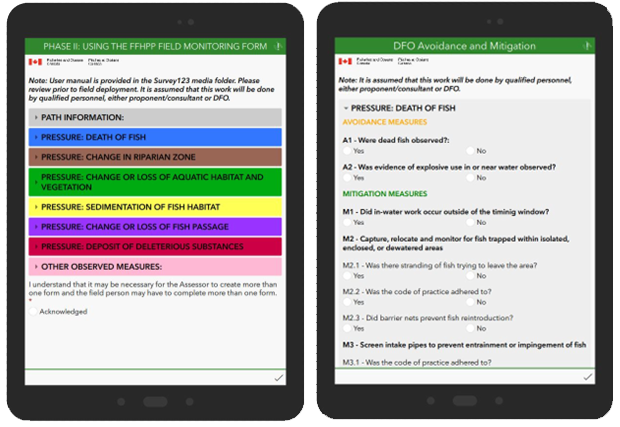POLICY AND PROTOCOL DEVELOPMENT
Monitoring Protocols to Determine the Success or Failure of Habitat Offsetting and Banking Projects, DFO, Edmonton, AB
Most habitat offsetting projects require some form of post-construction monitoring to determine success/failure. Despite years of monitoring for hundreds of offsetting projects, the absence of comparable data prevented DFO from determining if some types of offsetting designs were more likely to succeed. As a result, they were unable to provide meaningful review comments on offsetting designs.
DFO retained 5SSR to determine the success of develop monitoring protocols to determine the success of channel relocation projects. The project involved the development of detailed sampling protocols and scoring metrics for each of 30 different parameters. The project also involved the development of a Survey123 Application so that the protocol could be applied in the field. The resulting database will be used by DFO to determine the best ways to carry out channel relocation projects.
DFO also retained 5SSR to determine the success of develop monitoring protocols to determine the success of 50 different ways to improve habitat. The project involved the development of detailed sampling protocols and scoring metrics for each of 35 different parameters. The project also involved the development of a Survey123 Application so that the protocol could be applied in the field. The resulting database will be used by DFO to determine the best ways to carry out habitat improvement projects.
Consistent methods of data collection and scoring are required to create a database that can help DFO improve the effectiveness of their review of offsetting/banking designs (5SSR photos).



